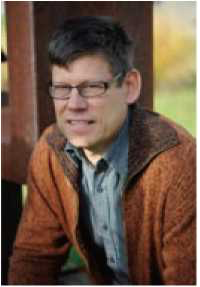Herman Terryn
1 Research Group SURF, Department MACH, Vrije Universiteit Brussel, Brussels, Belgium
EXTENDED ABSTRACT: Corrosion prediction by multiscale modelling aims to achieve the required paradigm shift in the lifetime prediction of metals. Modelling of atmospheric corrosion, for example, based on Finite Element Modelling (FEM) requires an exact description of the boundary region between metal and electrolyte. This requires a radically different research approach for the electrolyte in contact with the metal surface. The critical issue is that most corrosion experiments in fundamental research are performed "in solution,, under the assumption that the electrolyte layer is thick enough to approximate it as "infinite", ignoring significant local effects introduced by dynamic electrolyte dimensions caused by droplets and puddles. During atmospheric corrosion of metals, the evolution of the thin-film electrolyte thickness is the primary factor determining the corrosion rate. A full understanding the evolution of the electrolyte thickness and properties as a function of the key environmental parameters is yet to be achieved. A novel methodology has been developed to conduct experiments under a regulated environment to measure the film thickness evolution or individual droplets on an undisturbed metal surface. Experimental results are compared with FEM models predicting both the electrolyte formation as well as the related corrosion. The heat transfer coefficient is noted as a critical parameter influencing both the film characteristics and the resulting corrosion rate. Combining the in-house MiTReM (Multi ion Transfer Reaction electrochemical model) with the electrolyte film thickness model, we could see that the corrosion rates become very critical in the range of 20 gm. The next step was to go into the dimension of droplets. A new approach was proposed to numerically predict and study atmospheric corrosion under droplet size distributions. The proposed methodology allows for a corrosion prediction based on observed droplet size distributions and droplet contact angles. This model is validated by comparing with experiments introducing droplet-induced corrosion in a lab scale reactor that allows monitoring in parallel droplet geometry and corrosion as function of induced thermal cycles in a controlled atmosphere.
Keywords: atmospheric corrosion; thin electrolytes; droplets;modelling

Herman Terryn has completed his PhD at the age of 28 years from Vrije Universiteit Brussel Belgium. He is at VUB Brussels and part time at TUDelft The Netherlands. He has published more than 560 papers in Scopus with h-factor 57 and has been awarded many prices, EFC Corrosion Medal 2014, Francqui Chair 2017, Corrosion H.H Uhlig Award Electrochemical Society 2017, Honorary Fellow Chinese Corrosion Association.